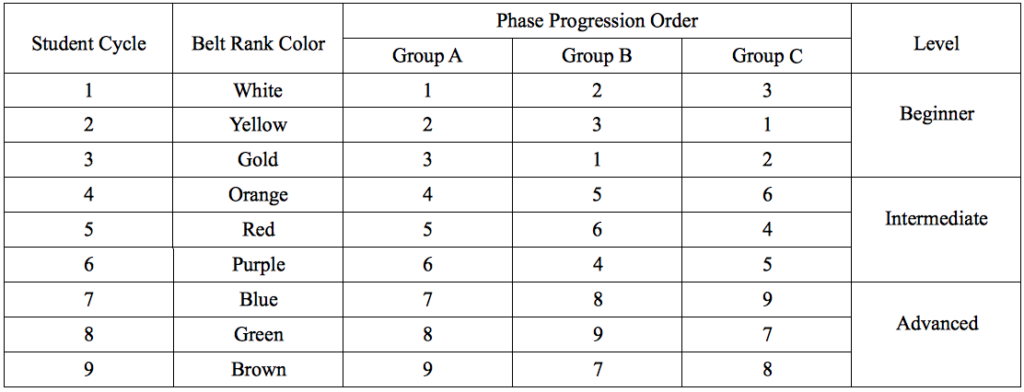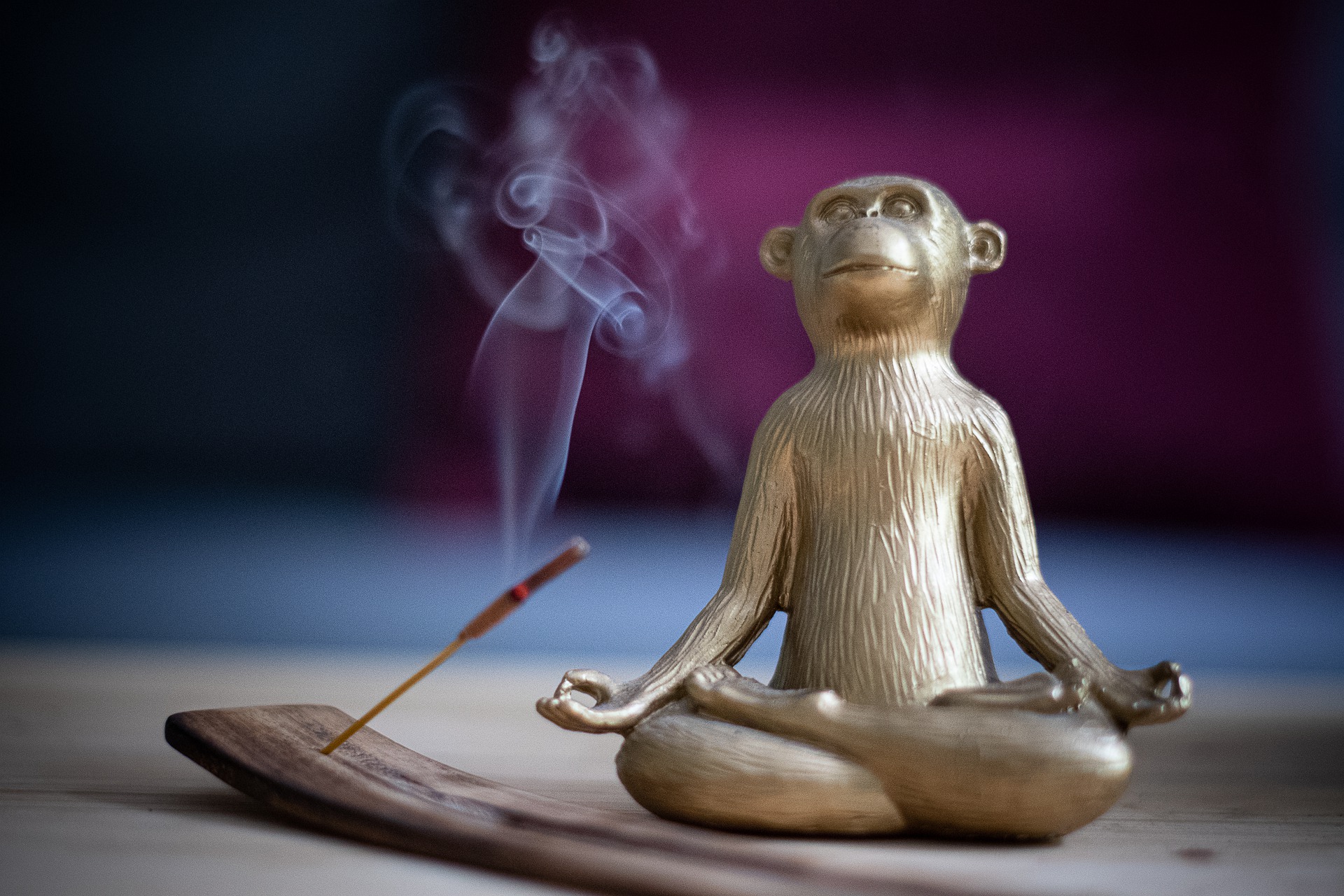As an instructor with a large class, I came across problems teaching so many people of different ranks. The prototypical solution is to divide the class into ranks and have each rank group work on different lessons. This division requires lots of room and very little time correcting the students. Also, I’m teaching four to five different things in the class. There is no consistency or connection to previous courses. Each rank group gets a portion of the period. For a half-hour section and three rank groups, that’s ten minutes for the sub-group. Breaking up the class is inefficient.
Another solution I learned was to get assistants to help teach. Now the rank groups get a full 30 minutes of instruction but not with the lead instructor. The rank group gets a senior student or a junior instructor, often volunteering. When do the assistants get their class? The problem with this method is the assistant instructors may not show up (because they volunteer), or the costs of hiring additional staff are high.
About Phases, Cycles, and Levels
I went to a training seminar for professional martial arts instructors and learned about a better method of teaching classes for large groups. It’s called a rotating curriculum. I teach the same material to the whole class at the same time. There is no need to break up the class by rank. How is this possible?
- Divide the belt ranks into beginner, intermediate, and advanced levels.
- Different belts ranks will be at each level. For instance, White, Yellow, and Gold belts are at the beginner level.
- Divided classes into beginner, intermediate, and advanced level classes at different times or days of the week.
- The material for each belt rank is a Phase. A Phase ends in a rank test.
- Colored belt ranks are divorced from particular techniques. For instance, the Yellow Belt material is now Phase 2 material.
What do I review at the test for different ranks? I evaluate the Phase material taught at that cycle. The limited format means the test is shorter, and the class performs together, synchronized as a team, and I can test a larger group of students. Since everyone is doing the same material, it is easier to score the test. The benefits to the instructor (me) are better student quality and retention.
What happens to new students after the first cycle? The new student starts learning the next Phase with the rest of the class. For my students, I have them organized into three groups, A, B, and C. New students are in one of those groups based on when they join the school. Below is the table detailing how it works.

The student cycle is the cycle number of the student’s career. They generally move from I to IX through their journey to Black Belt. However, they may not start with Phase 1. They could begin with Phase 2 or Phase 3. The table shows which Phase they advance to after the test.
By the end of the beginner level, the student will know all of the material from all three ranks. The same thing occurs at the intermediate and advanced levels. Testing for Black Belt, all the students will have the same content.
The only issue that this method of teaching causes is the change in class times. Once you test out of the beginner level, the intermediate class is at a different time or day. The same thing happens when a student promotes out of intermediate and enters the advanced classes. However, I did do something like this anyway. During my La Mesa dojo days, I had a special White-Yellow belt class and a Brown Belt class in addition to the regular class. So the difference in my school is negligible.
An Example Students Training Life
Using the table above, let’s use a new student’s life as an example. Maria joins Golden Leopard Kempo during the third cycle, so she is in group C. In her beginner class, she learns the old Gold Belt material first. After her first test, her class will learn the old White Belt material. And her next Phase, she learns the old Yellow Belt material. Using the table above, we see she learned Phase 3, then Phase 1, and then Phase 2. Maria has absorbed all the basic curriculum (kata, counters, and drills) and is ready for the next level.
When she promotes to the intermediate class, Maria learns the old Purple belt material first. After her test, the class will learn the old Orange belt material. Finally, in the sixth cycle, she’ll learn the old Red Belt material. To summarize, Maria learned Phase 6, then Phase 4, and then Phase 5 material. Maria has absorbed all the intermediate curriculum (kata, counters, and drills) and is ready for the next level.
At last, Maria enters the advance class and is a model student at her school. The first Phase she learns is 9, which is the old Brown Belt material. After the test, Maria learns the old Blue Belt material. In her last advance cycle, she learns the old Green Belt material and is now ready to test for Black Belt.
What happens is this, Maria is a Blue Belt knowing Brown Belt material. At any level, the difference between the technical content is not that different. There is a difference between content at the beginner and advanced level, which is why I divide these classes. When Maria is a Green Belt, she’ll know Brown and Blue Belt material. And at Brown Belt, Maria will know all the content for all three Phases of advanced level.
Benefits of Rotating Curriculum
Now, this may seem not very easy for you in this explanation, but I promise you it is effortless to understand in implementation. It flows naturally from Phase to Phase, and through cycles. The benefits are immense. Classes are better because I instruct all three ranks in the same class at the same time teaching the same material. The rotating curriculum brings high energy classes, organization, manageability, excitement, teamwork, and unity to the student program and students’ learning.
The rotating curriculum also requires less staff for maximum results. I don’t need a ton of assistants when two or one will do. The class can handle more students to teacher ratios because of the simplified curriculum. Tests are more comfortable to run because I can maintain high energy and unison during the session, and the test can be huge. Also, the examiners are only looking at a smaller set of curriculum.
Our cycles run ten weeks, with five cycles per year. That’s 50 weeks of class per year, including our standard two weeks off for the holidays.
That’s a quick explanation of the rotating curriculum and how we implement this method in our school. At Golden Leopard Kempo, we are always looking for ways to improve our teaching methods. We practice the Constant and Never-ending Improvement philosophy in our school. The commitment to improvement led me to implement a rotating curriculum, and I am pleased with the results.
‟There are no bad students, just bad teachers.” – Mr. Miyagi, The Karate Kid.



